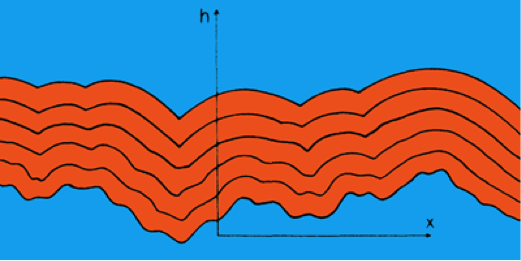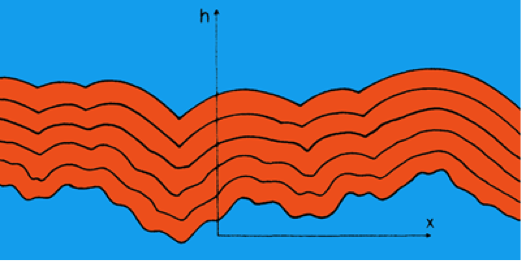Scaling the Heights
Even starting from a perfectly flat substrate, the growth of a thin film by continuous deposition can lead to a surface with increasing roughness. From a technological standpoint, interest in understanding this and other surface growth phenomena is clear, but growth behavior is also a challenging fundamental problem in nonequilibrium statistical physics. In the mid-1980s, three physicists devised the eponymous Kardar-Parisi-Zhang equation to describe how the distribution of heights on a growing surface evolves over time. Since then, the KPZ equation has been tackled for a variety of growth scenarios.
Writing in Physical Review Letters, Takashi Imamura of the University of Tokyo and Tomohiro Sasamoto at Chiba University, Japan, have built on prior work and discovered an exact solution of KPZ in the stationary case (that is, when the surface has evolved to a steady state.) The essential quantity they obtain is the two-point correlation function as a function of space and time, which is directly related to measurements of dynamic surface structure. The authors propose that laser-controlled growth of liquid crystal clusters could be used to experimentally test their stationary state calculations: a wide range of initial conditions can be produced with such a system, enabling a thorough analysis of different growth scenarios. – David Voss





